On 25th july, we were supposed to meet at Marina South Pier at 5.15am! So I had to wake up at 3.45am, to prepare and my dad came to fetch me at 4.15am then drive to Ailian's hse then to the pier, but of course the organisers had reimburse our transport fare ($20 per person) as it was too early to take public transport. We reached the pier around 4.45am... Too early, so just sit there and slack for a while. After attendance-taking and giving out of money, we finally got in the boat. About 45minutes ride. During the ride, there were distribution of the ID charts, forms and short briefing on what to do.
Upon reaching there, we start to wear our booties and collect the essential stuffs. And we headed for a long long walk to the intertidal area. (coz there is no bus at such early timing). Long, nice walk, the hike through the forest, we finally reached the inter-tidal area, by that time, the tide is already very low. We headed to the extreme right of from the entrance, the sand was very soft, sinking in every step. Finally, we reached our column, so out hunting-seeking survey begins...
At the rocky shore, there were a lot of snails~~~ Some photos and identifications...
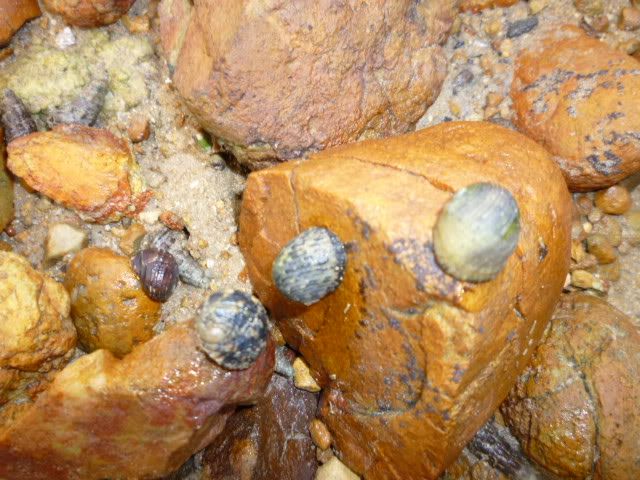
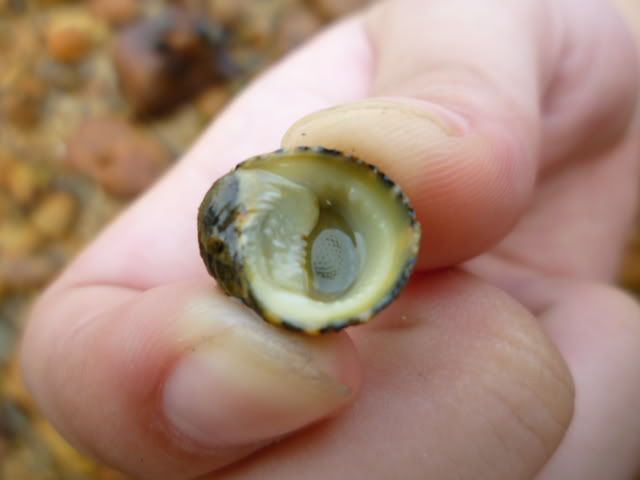
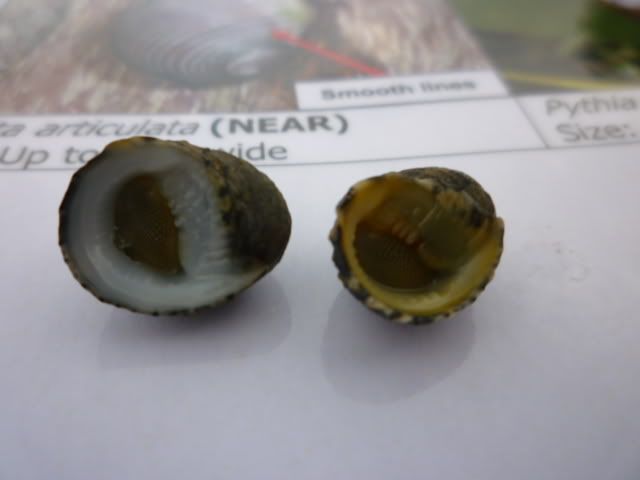
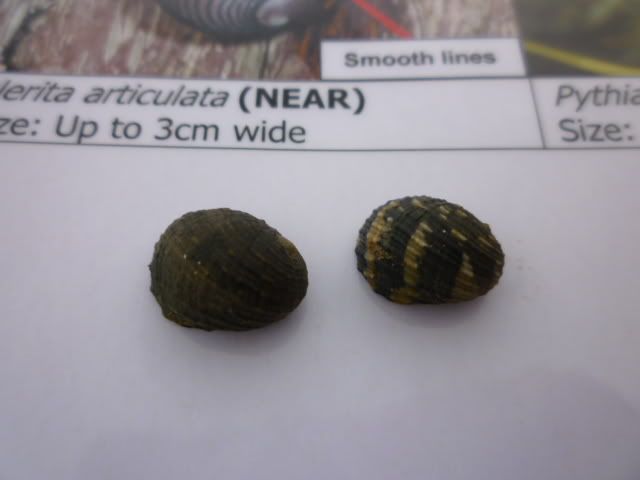
I think this is Nerita albicilla. It has many little bumps on its operculum and columellar shelf. That little bumps texture feels like the ox-tongue, so it’s commonly known as the Ox-tongue netrite snails as well. :D
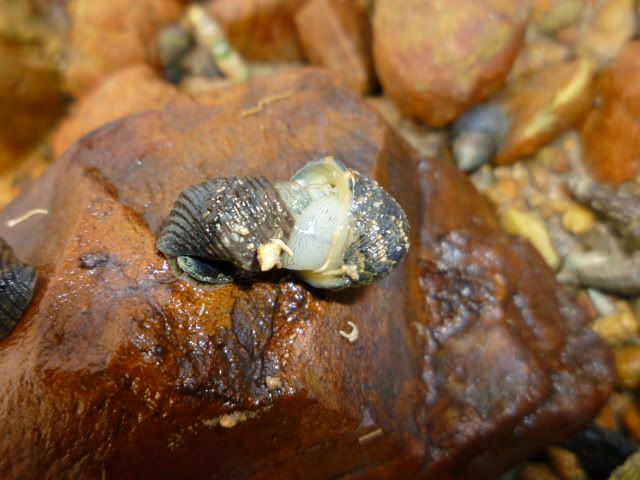

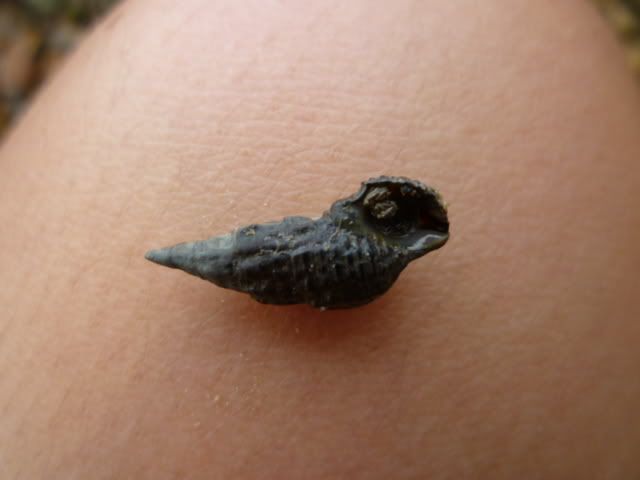
Another kind of snails Cerithidea cingulata. There were abundance of these 2 types of snails. Walking through the rocky shore seems like killing a lot of them, it's really hard not to step on them! :P
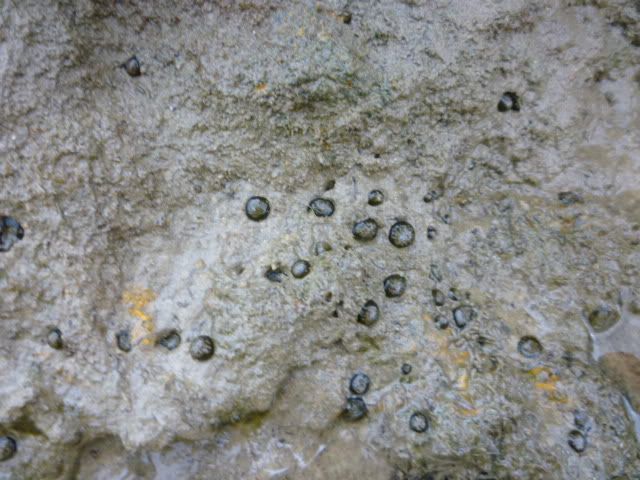
The black stuff is known as the bead anemone according to the ID chart. But I remembered it as black bubble anemone as my TA told us that during the Changi Beach trip on our biodiversity practical. There are a lot of them too too! :D

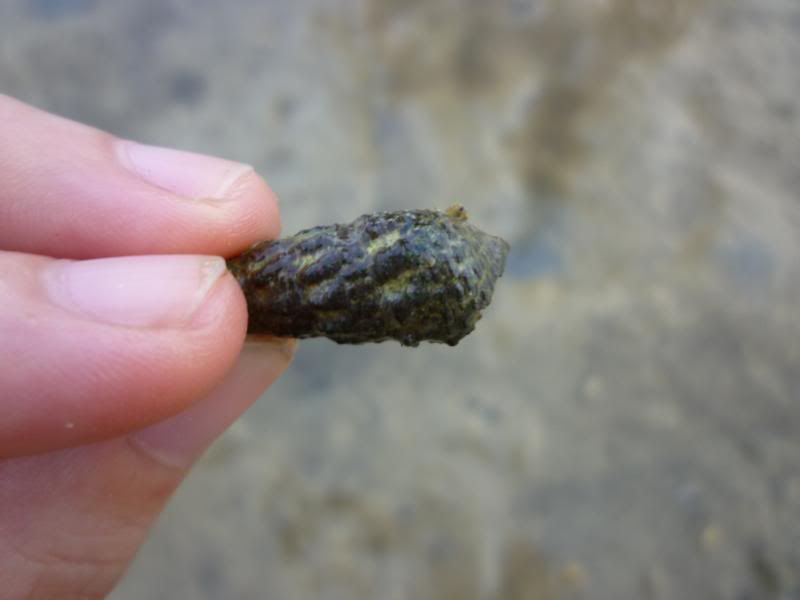
Tidal Hermit Crab Diogenes sp. Note the stripes on their legs. Hermit crabs need shells to protect their soft abdomen, in fact they have less than 4 pairs of walking legs and they do grow out of the shell and need to find new homes!
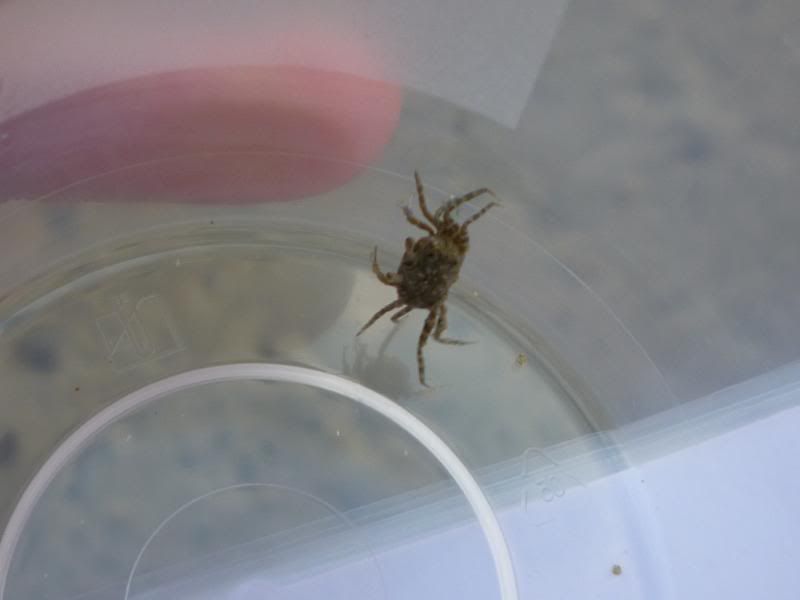

Sentinel Crab Macrophthalmus milloti It's really well camouflage, if it does not move, I won't even notice it! There are black patches on its body. But I manage to catch it using chopsticks for a photo-taking session. Hehe... but I didnt manage to catch another bigger one long enough for photo taking... They can burrow into the sand very fast and after I release it, it burrowed in very quickly and disappear out of my sight within seconds! :P

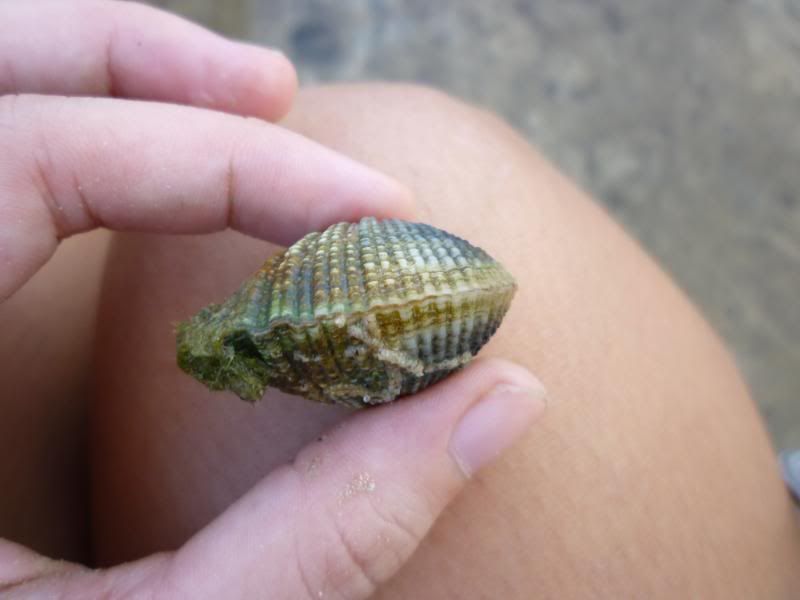
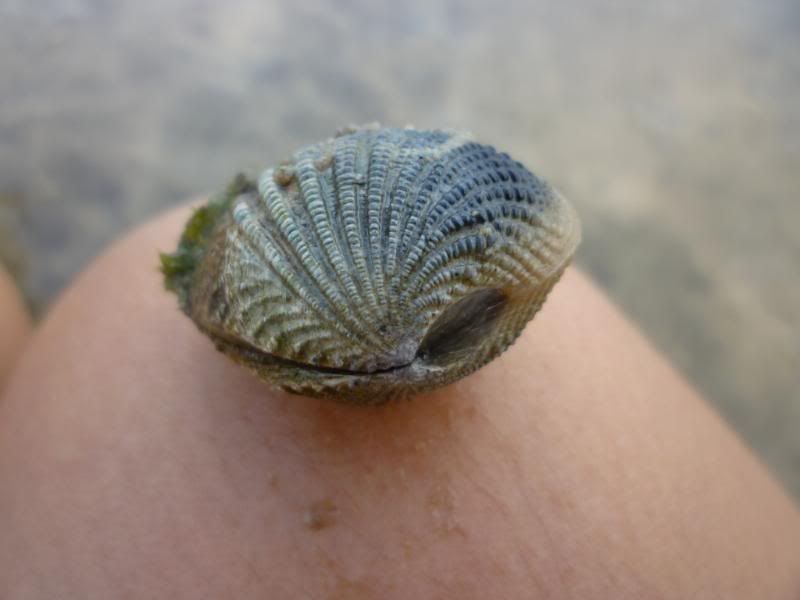
Gafrarium tumidum with some keelworm on it... But I'm not too sure if the keelworms are alive. The 3rd photo can see the hinge. The black area is where the muscles are, to open and close the shells. They also burrow through the sand, and if I didnt remember wrongly, they are filter feeders.
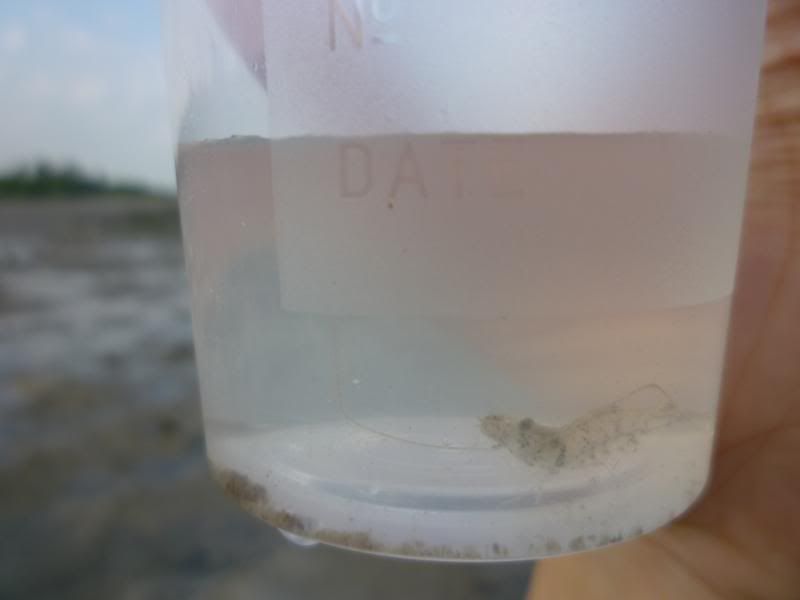
Penaeid Prawn (Family Penaeidae) This looks like those normal shrimps sold in the markets. They really leap very fast, I am so proud of myself that I managed to catch it! :P But of course, I release it after photo-taking! We can also hear the snapping sound made by the snapping shrimps, but were unable to find one, they can really hide well and camouflage well. The snapping shrimp has one enlarged pincer which makes the snapping sound. The sound is used to stun it's enemies and preys. Imagine such small body can make sounds that can be heard by humans, of course it will be soooooo loud that it can stun the enemies and preys.
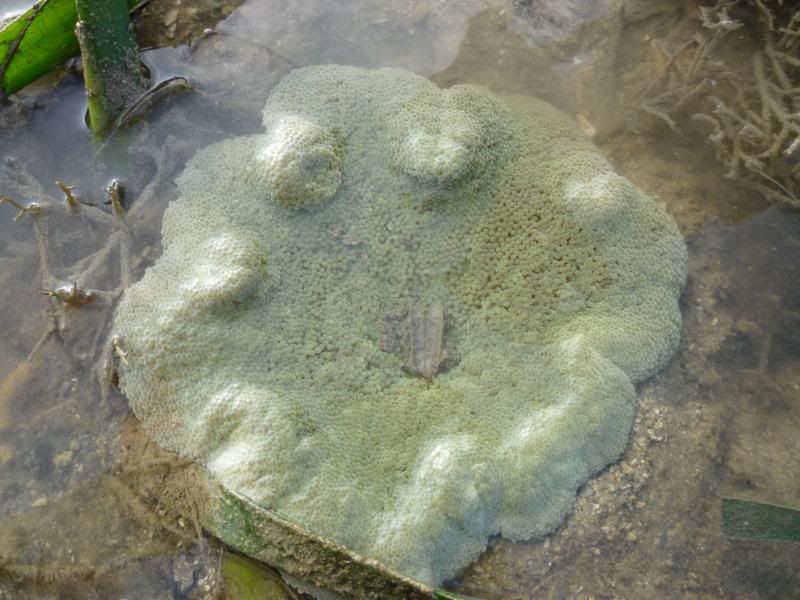
Haddon's Carpet Anemone Stichodactyla haddoni. There are also purple and brighter green ones, but the one we've found is of dull green colour. There are 2 types of tentacles - long and short at the edges, but it cannot be seen from this photo.
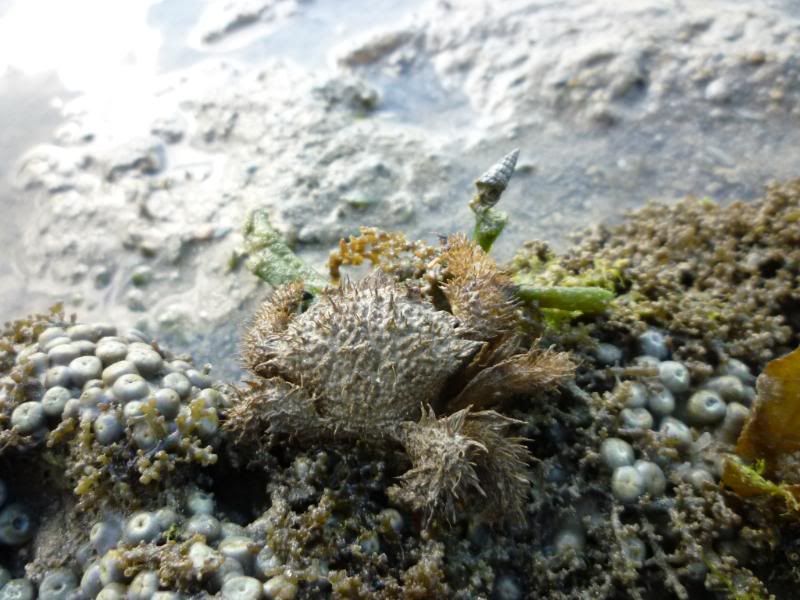
Hairy Crab Pilumnus vespertilio. This crab is rather large, about 5cm wide. This Mr Hairy crab is very nice, it didn't move at all during the photo-taking! And it's really hairy.
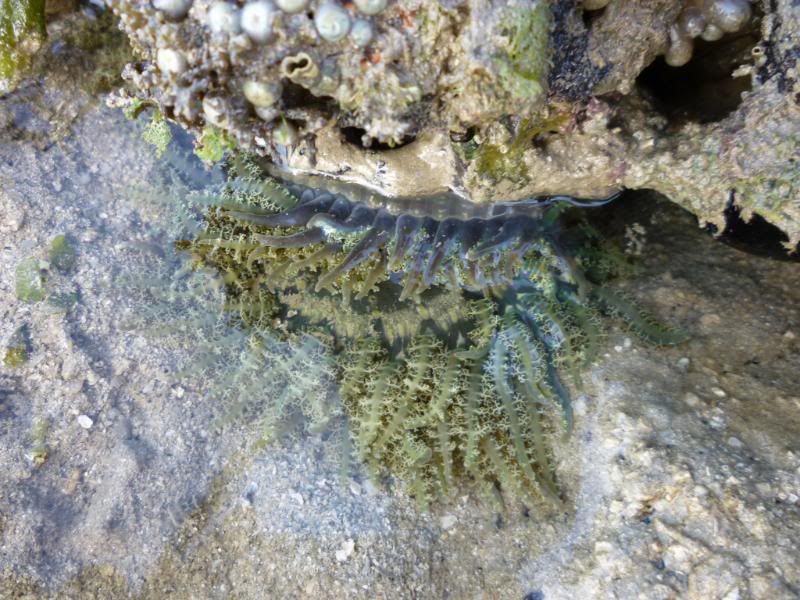
This should be Branched Tentacle Anemone Phymanthus sp. It has secondary branching tentacles.
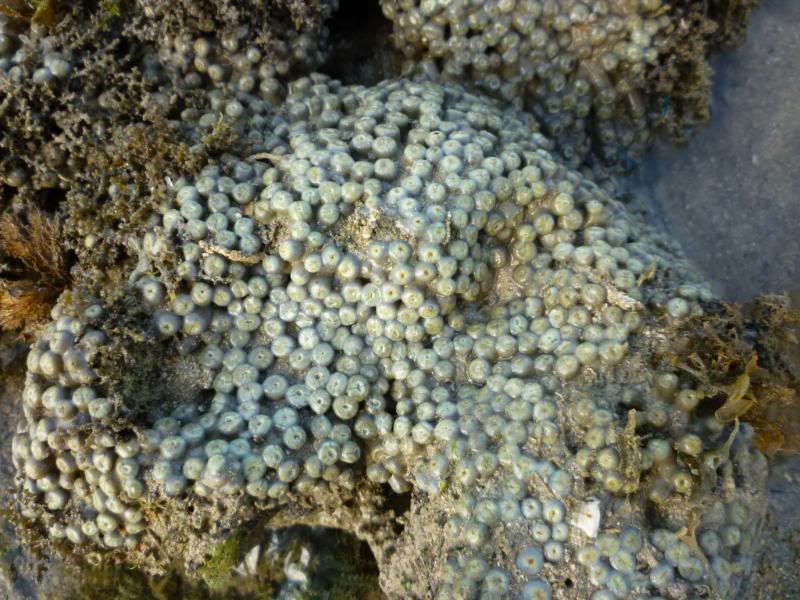
This should be Zoanthid (small polyps) Zoanthus sp.
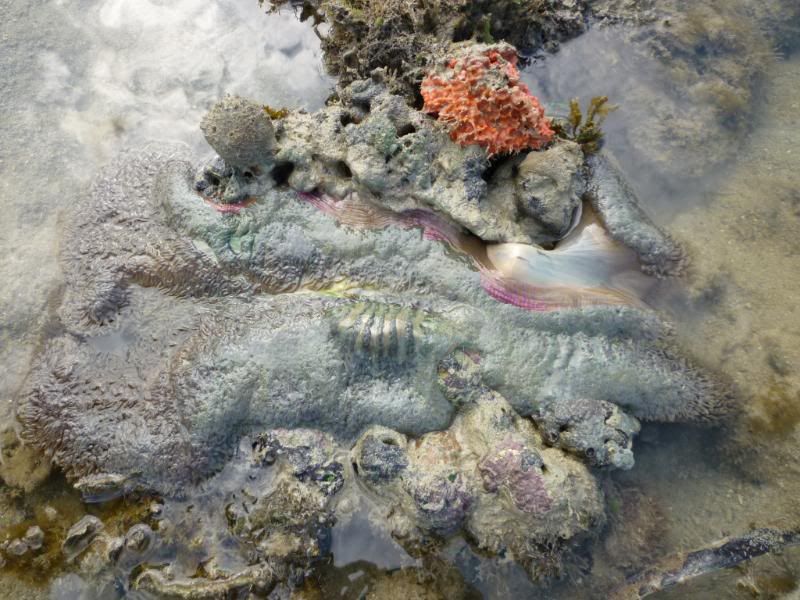
This is the Magnificent Anemone Heteractis magnifica. It is really large, bigger than both my feet! haha... Note the pink underside. As it was low tide, the tentacles were not extended. When i touch the tentacles using my chopsticks, it feels sticky!
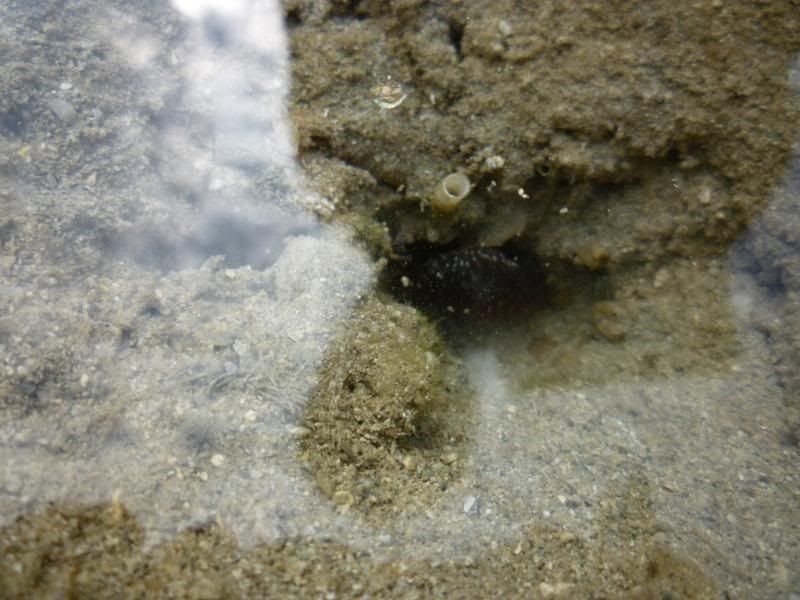
There's a beautiful Fan Worm Sabellastarte indica in the hole! Unfortunately, we were unable to admire it's beauty from this photo. :(
By the time, we need stop and need to head back to the main road. But on our way back, we found some interesting things!
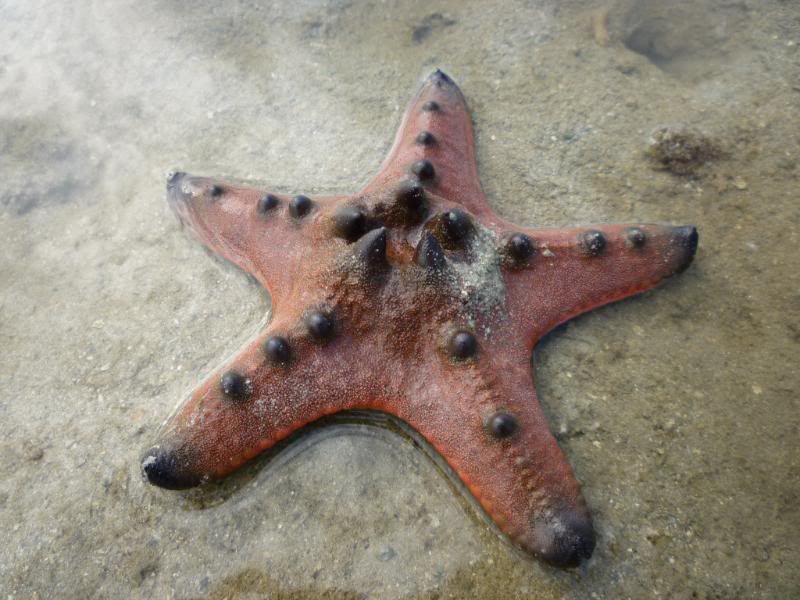
Our famour star in Semakau! Knobbly Sea Star Protoreaster nodosus It can grow up to 35cm wide!!! Do you know that sea stars do not have brains! And also it has the ability of regenerating arms when it has lost arms. They undergo pseudo mating; releasing sperms and eggs into the waters and fertilisation will occur. Another interesting fact about it is that they do move! They have tube feet, to enable movement.
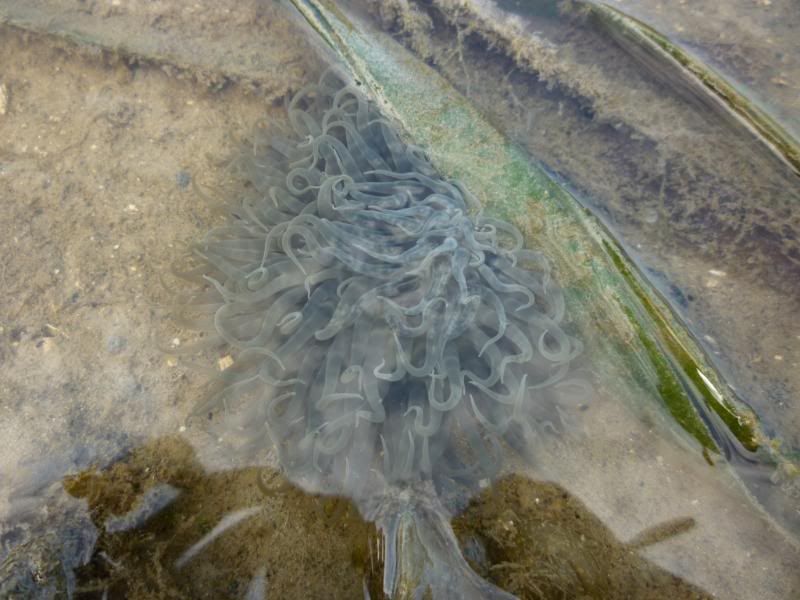
Ailian found this Swimming Anemone Boloceroides mcmurrichi. It really can swim! By flinging its 'arms'. Haha...

Finally, the last picture of the day. Porcelain Fiddler Crab Uca annulipes. The enlarged pincer is actually something that attract females, and only the males would have. In fact, the enlarged pincers will hinder their life. But it was believed that if the males can survive well with a large pincers, it can also protect the females. Some kind of attraction.
That will be the end of my post. Finally! I think i spent a lot of time on this entry! Hope I didnt identify them wrongly. And I hope that by doing this, can make me more familiar with the biodiversity in Semakau! :D
